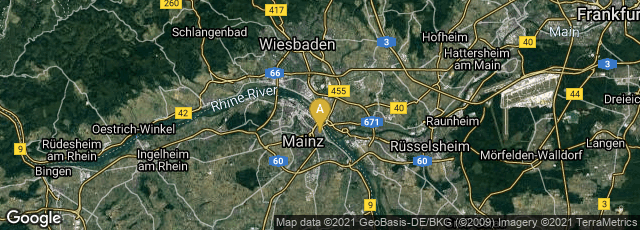

A: Altstadt, Mainz, Rheinland-Pfalz, Germany
The so-called “Giant Bible of Mainz,” one of the most magnificent Middle-Rhenish manuscript books of the fifteenth century, was written by a single scribe in two columns on parchment in gothic letters on leaves measuring 570 x 400mm. The scribe, who has not been identified, dated his work in various places in the manuscript, finishing on July 9, 1453.
Around this time large Bibles, designed to be read from a lectern, were returning to popularity for the first time since the twelfth century. In the intervening period, small hand-held Bibles had been most widely used.
The similarity in format and calligraphic style between this manuscript and the typography of the Gutenberg Bible issued just two years later is striking, suggesting that this manuscript might be the model for the typography Gutenberg used in his 42-line Bible. There is also a striking similarity between the illumination of this manuscript and the illumination of the William H. Scheide copy of the Gutenberg Bible at Princeton University. In addition, both styles of illumination bear a strong relationship to the style of certain engraved designs by the Master of the Playing Cards, the first "major master" in the history of printmaking, and "the first personality in the history of engraving." In Gutenberg and the Master of the Playing Cards (1966) Hellmut Lehmann-Haupt suggested that the creators of these illuminations and the Master of the Playing Cards may have used a common model book which is now lost.
The manuscript is preserved in the Lessing Rosenwald Collection at the Library of Congress.